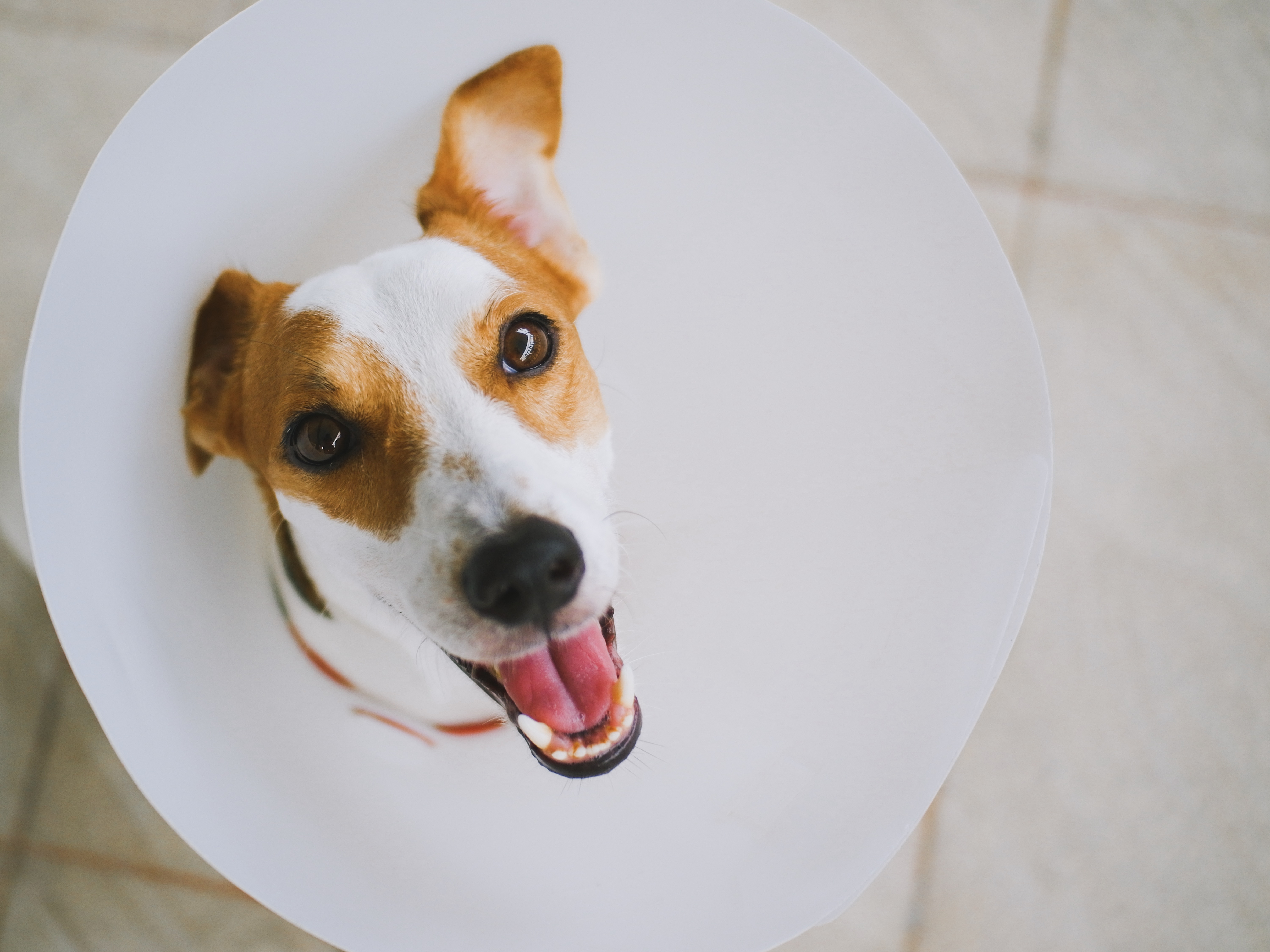Spaying or Neutering Your Dog
Read all about the basics of spaying and neutering your dog, as well as the top three benefits.

When it comes to spaying or neutering your dog, there are countless benefits. Read on to learn all about the basics of spaying and neutering, as well as the top three benefits.
What is spaying and neutering?
Spaying and neutering a dog is the process of removing certain reproductive organs so that the animal can no longer reproduce.
Spaying is the removal of a female dog's reproductive organs. When a female dog is spayed, the veterinarian removes her ovaries. Neutering is the same process that's done for male dogs. When a male dog is neutered, both testicles are removed.
The spay or neuter procedure is done by a veterinarian while the animal is under general anesthesia. It is not painful for animals during the procedure, and he or she is sent home with pain meds afterward.
What are the benefits of spaying or neutering?
There's a reason that the vast majority of veterinarians recommend that pets be spayed or neutered. Here are the top three benefits of choosing to spay or neuter your dog.
-
Spaying and neutering helps dogs live longer, healthier lives.
Numerous longitudinal studies have shown that neutering dogs prevents testicular cancer, as well as many problems with the prostate. Bonus benefit: When a male dog is not neutered, he'll do pretty much anything to find a mate when the mood strikes. This could mean trying to get out of the house and yard as much as possible, which can easily lead to getting injured in traffic or getting in fights with other animals. Neutered dogs, however, won't have this instinct. Studies show that as many as 85% of dogs hit by cars are not spayed or neutered.
Spaying dogs helps prevent uterine infections and breast tumors. Choosing to spay your dog before her first heat usually gives the best protection in the long run.
In general, studies show that spaying or neutering dogs adds one to three years to their life.
-
Spayed or neutered dogs are generally better behaved.
Dogs that are spayed or neutered are less likely to mark their territory in a house, mount things (such as other dogs, people and inanimate objects) and show aggression. Unneutered dogs have a higher level of testosterone, which can make behavior problems more likely.
-
Spaying or neutering helps control the pet population.
Sadly, millions of dogs are euthanized in the United States every year simply because there are so many of them and not enough families willing to adopt them. By choosing to spay or neuter your dog you're helping to control the pet homelessness crisis. The rates of euthanasia are much higher in areas where spay and neuter programs are not available.
How much does it cost for a spay/neuter?
Usually, this procedure is about $100. This cost is far less than the cost of having and caring for a litter of puppies and also far less than dealing with the potential problems that unfixed dogs have.
When is the best time to spay or neuter a dog?
Because each dog is unique, it's important to talk to your veterinarian about the best time to spay or neuter. However, here's a starting point.
Dogs should typically be spayed or neutered when they're between six and nine months old. However, it can be done earlier, as long as the dog is healthy. They can be neutered as adults, but it's not recommended, as there's a higher chance of complications in older dogs.
Breaking down spay and neuter myths
Somehow, many myths about spaying and neutering became common. Here are a few of the most popular myths and why they're not true.
-
Spaying and neutering makes a dog fat.
False. Diet and exercise is what makes a dog fat or thin. Spaying and neutering is not related to weight.
-
Purebred dogs can't be spayed or neutered.
False. Unless there are underlying medical conditions, any dog can be spayed or neutered.
-
If I don't spay or neuter my dog and he or she reproduces, I'll find good homes for all of the offspring.
Shelters and rescues across the country are already completely full of deserving dogs in need of a great home.
-
A female dog needs to have at least one heat cycle before being spayed.
False. Actually, animals spayed before their first heat are typically healthier.
-
Dogs that are spayed or neutered aren't protective.
False. A dog's natural instinct is to protect their house and family. This will not be changed as a result of neutering. The degree to which he is protective is formed mostly by his individual personality, genetics and environment.
Ready to spay or neuter your dog?
If you have more questions about spaying or neutering your dog, or if you're ready to get the procedure done, contact your veterinarian. He or she will walk you through the simple steps of the process and get you scheduled for the procedure.
Spaying and neutering is a great option. It's beneficial for both you and your dog, and it's also considered to be an important responsibility as a pet owner.
Ready to start saving money on pet wellness care?
Then take a look at Mint Wellness, the pet wellness plan that provides fast reimbursement on routine pet care. Save on vaccinations, wellness exams, preventatives, dental, and more!
Learn More


